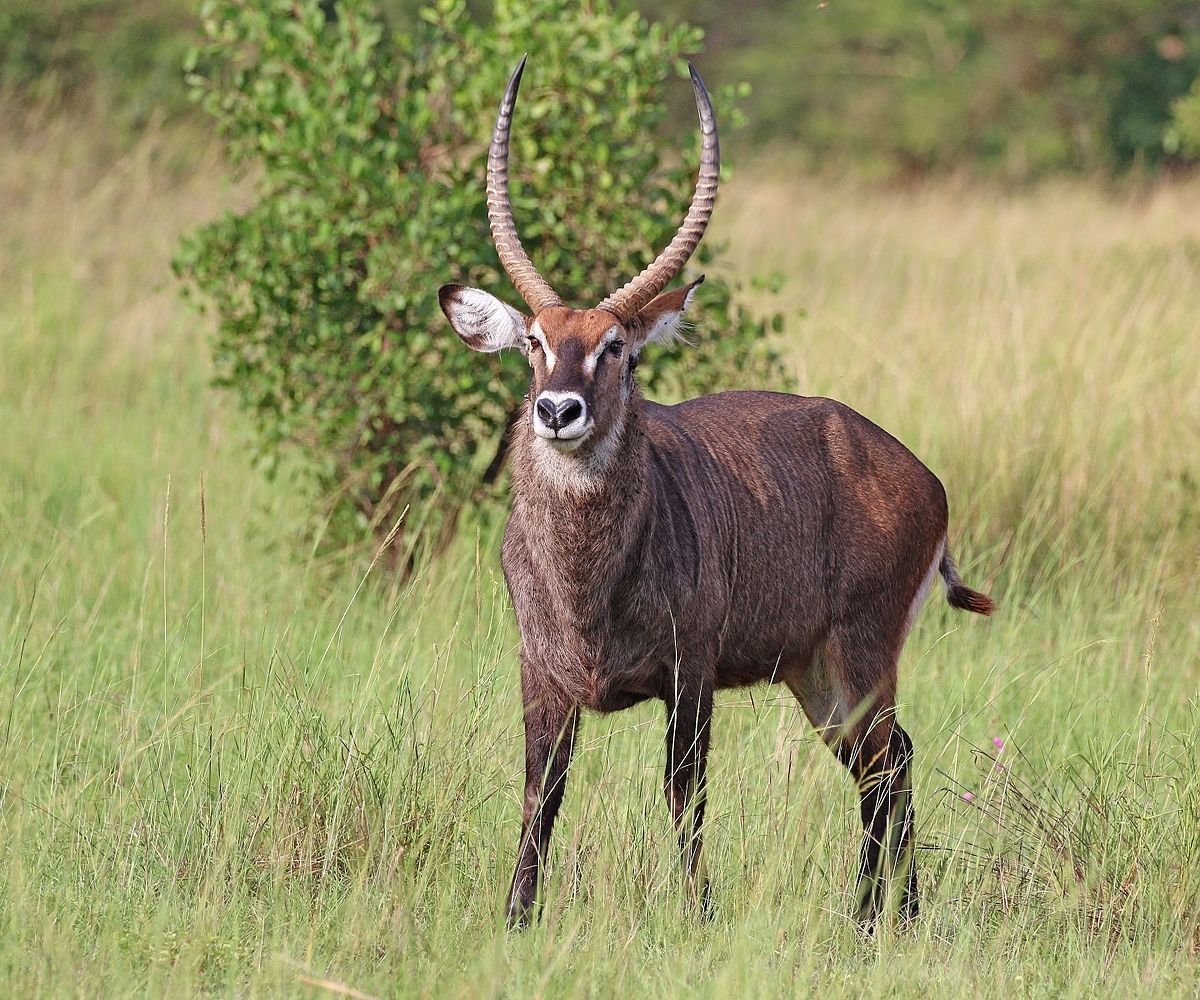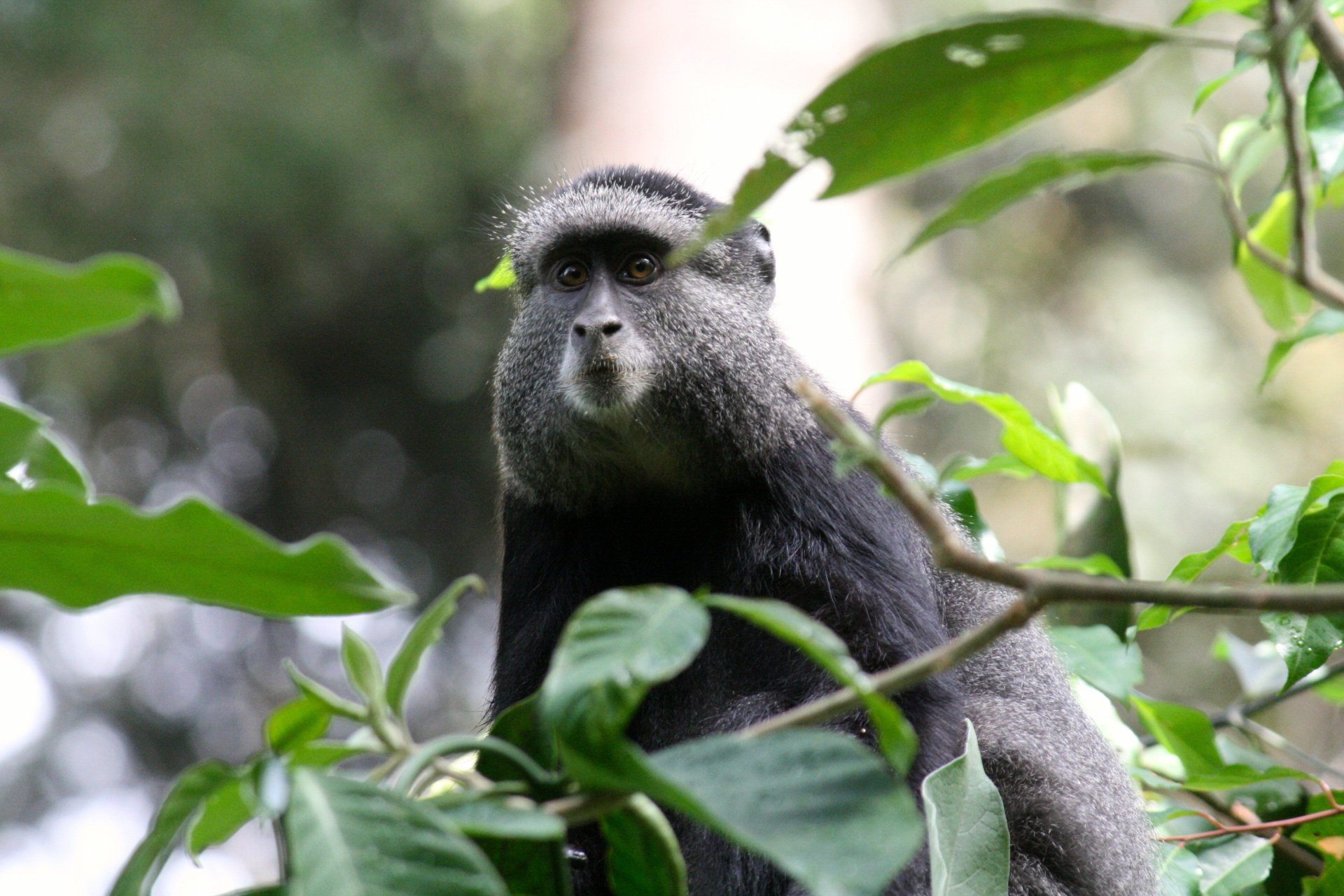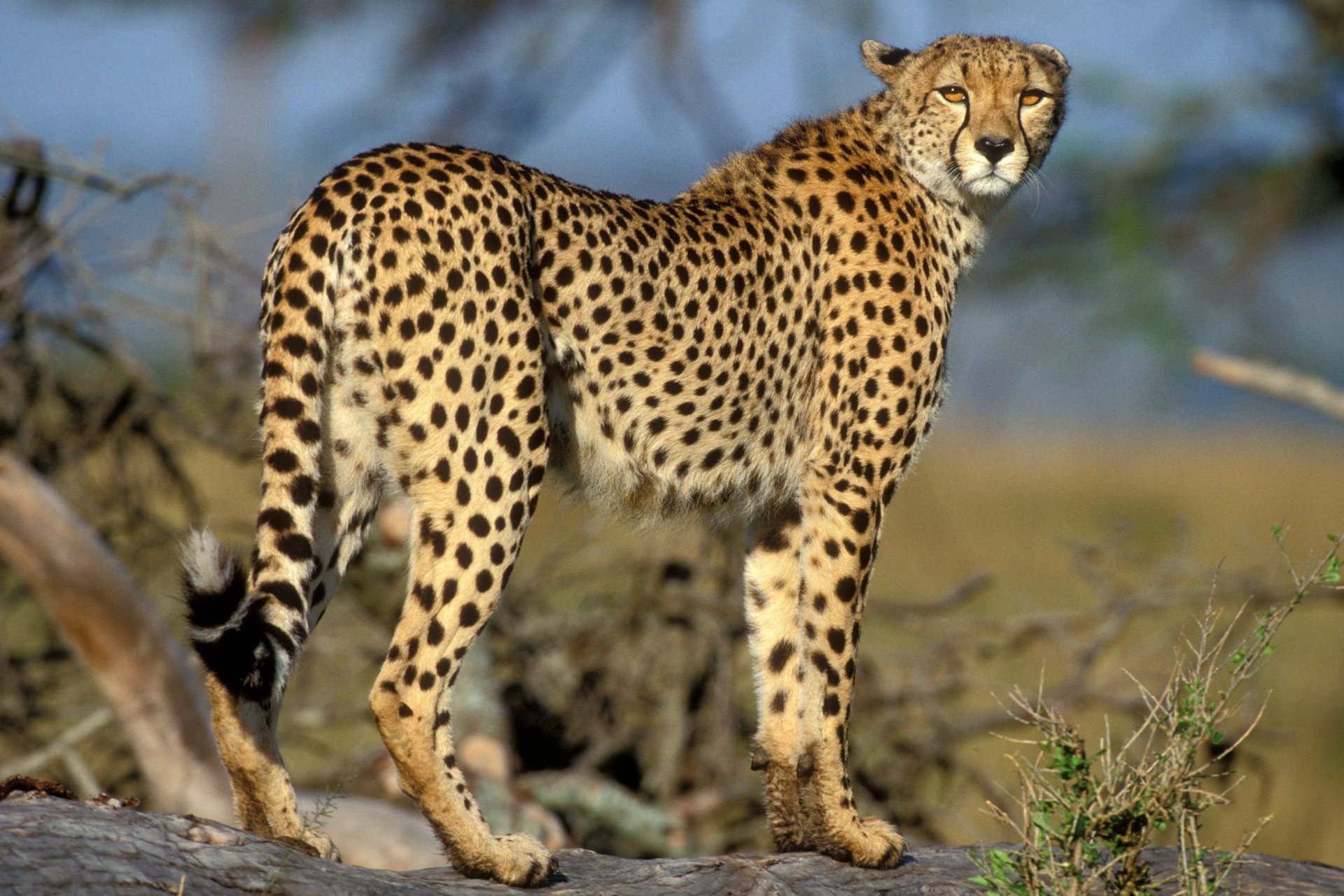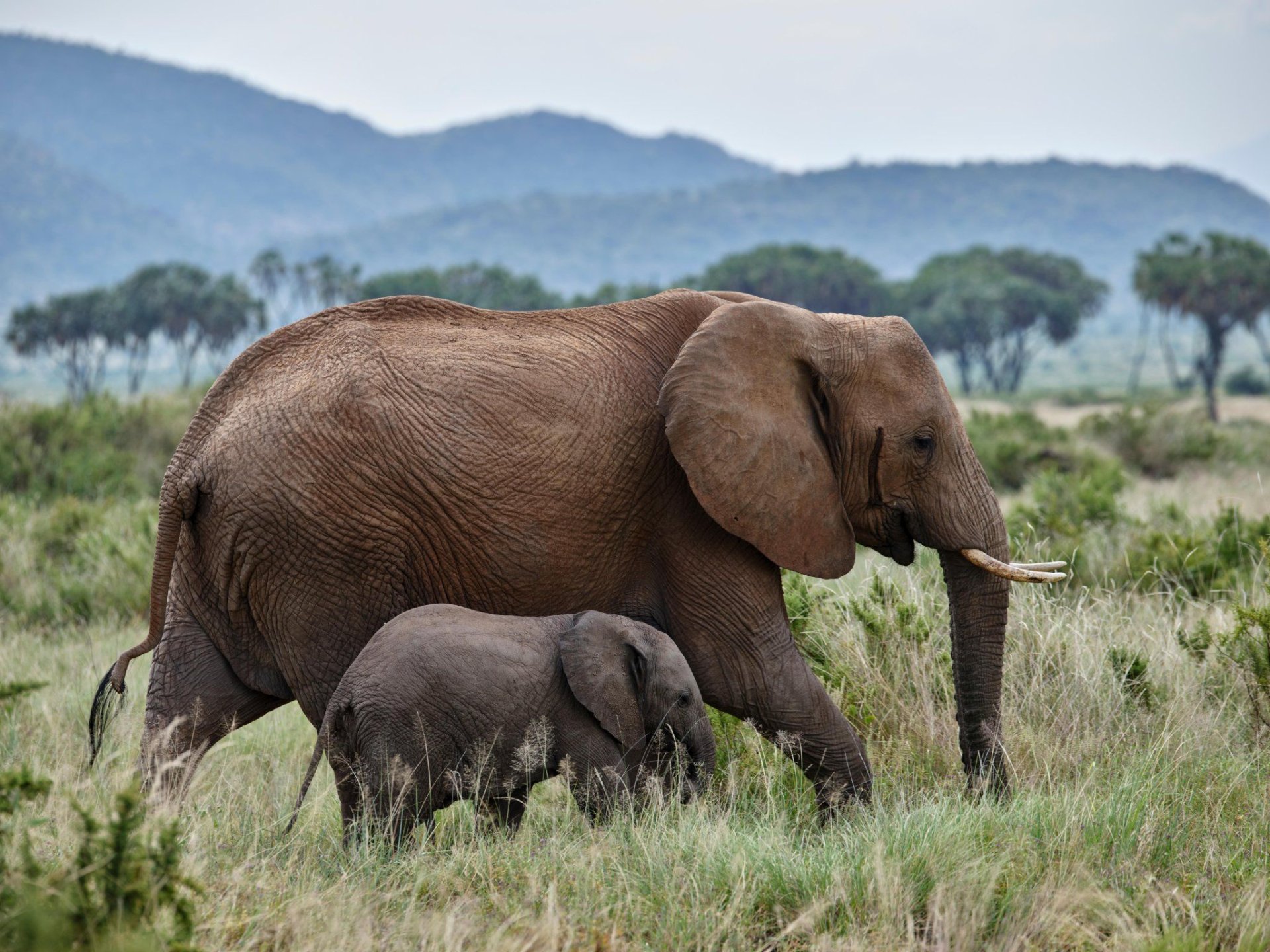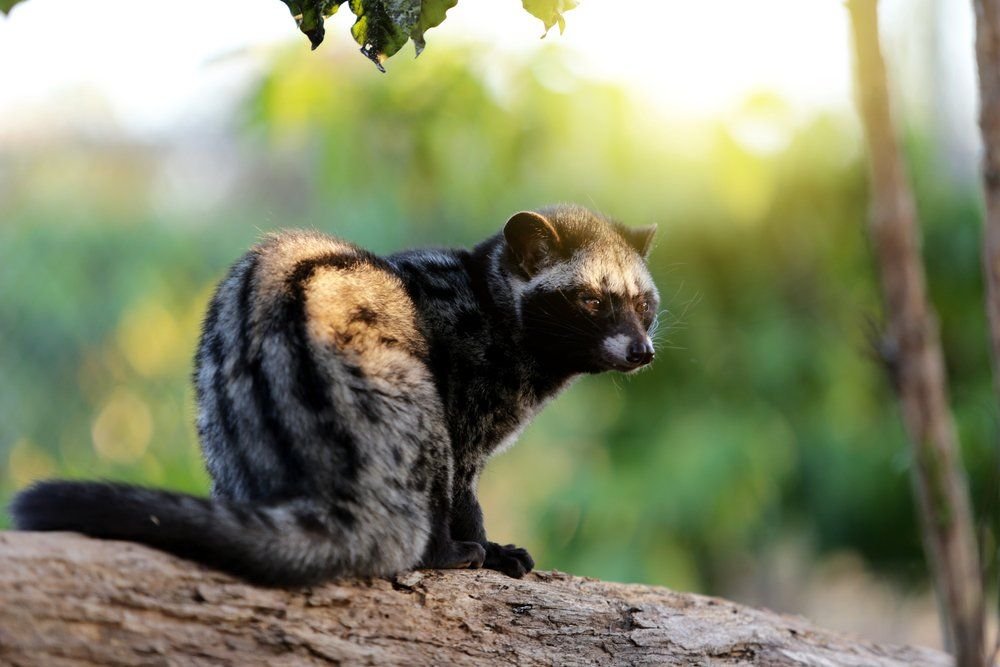Leopard
Leopards have been seen in Queen Elizabeth, Murchison Falls, Kidepo Valley, Lake Mburo, Mt. Elgon, and Toro-Semuliki Wildlife Reserve, which are all national parks in Uganda.
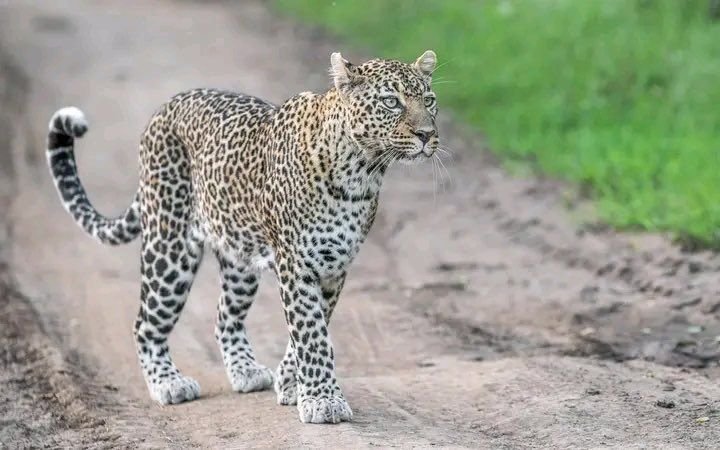
The leopard (Panthera pardus) is one of the five species that make up the genus Panthera, which is part of the Felidae family of cats. Sub-Saharan Africa, some regions of Western and Central Asia, Southern Russia, the Indian subcontinent, and Southeast and East Asia are just a few of the regions where it can be found.
The leopard has a long body and a big head, but its legs are shorter than those of most other wild cats. Rosettes are used to decorate its fur. It looks like a jaguar (Panthera onca), but it is smaller and lighter, and its rosettes are usually smaller, more numerous, and don't have spots in the middle. Black panthers are both melanistic leopards and melanistic jaguars. The leopard stands out because of how well it can hide, how it hunts when it has the chance, how varied its diet is, how strong it is, and how well it can adapt to a wide range of environments, including dry and mountainous ones. It has a top speed of 58 km/h (36 mph).
Behaviour of a Leopard
The leopard is a solitary and possessive creature. When crossing streets and spotting approaching cars, it is usually wary and watchful, but if attacked, it may become brazen and turn on people or other animals. Adults exclusively interact during the breeding season. Even after weaning, females engage with their young. When they are unable to catch any prey, they have been seen sharing kills with their young.
Leopards sleep most of the time they are awake in thickets, between rocks, or on tree branches. They are most active from twilight till dawn. Leopards have been seen wandering 1–25 km (0.6–15.5 mi) at night over their territory; if disturbed, they may even stray up to 75 km (47 mi).
Leopards are expert climbers, frequently resting on tree branches and often descending from trees headfirst. They have a top speed of over 58 km/h (36 mph), a horizontal leap of over 6 m (20 ft), and a vertical leap of up to 3 m (9.8 ft).
Vocalisations
They make a variety of sounds, like growls, snarls, meows, and purrs. Leopard roars mostly consist of grunts, sometimes known as "sawing" roars because they sound like wood being sawed. Cubs use an urr-urr sound to communicate with their mother.
The Leopard Diet
The leopard loves medium-sized prey that weighs between 10 and 40 kg because it is a carnivore (22–88 lb).
Ungulates like the impala (Aepyceros melampus), bushbuck (Tragelaphus scriptus), common duiker (Sylvicapra grimmia), and chital are the most popular species (Axis axis). Semnopithecus Sylvicapra hunts primates like grey langurs, guenons, and white-eyed mangabeys (Cercocebus sp.). Leopards also prey on smaller carnivores, including cheetahs, genets, bat-eared foxes, and black-backed jackals (Lupulella mesomelas), among others.
The leopard has been seen close to populated areas, frequently attacking dogs, livestock, and, sporadically, even people.
Male consumption rates were predicted to be 3.5 kg (7 lb 11 oz) and female consumption rates to be 2.8 kg (6 lb 3 oz).
Where in Uganda can I see leopards?
In Uganda, leopards have been spotted in a number of national parks, including Queen Elizabeth, Murchison Falls, Kidepo Valley, Lake Mburo, Mt. Elgon, and Toro-Semliki Wildlife Reserve.
Leopards have also been spotted in the Buligi circuit area of Murchison Falls Park's northwest, but this is probably because patrols are more aggressive here than they are elsewhere.
Since there aren't many patrols in the middle of the park each year and most sightings happen near where rangers patrol, leopards are probably more common than these numbers show.
According to the data the rangers gathered, there has only ever been one leopard sighting in the Ajai Wildlife Reserve.
More leopards have been seen in the Narus valley than in the whole of Kidepo Valley National Park. Despite the fact that there are more ungulates in the Narus Valley than in the Kidepo Valley, the sightings are still most likely the consequence of different patrol efforts. Therefore, it is clear that there are more leopards in the Narus valley.
Leopard sightings by tourists on Uganda safari game drives have been regular west of Lake Mburo National Park, with some sightings on the ranch lands to the park's north.
Mt Elgon National Park, a montane forest with alpine vegetation at high altitudes in the east, is another stronghold for leopards in Uganda. The lower altitude montane forest or the degraded forest on the park's periphery is where leopard sightings are most common.
Since observations began in 2007, the Toro-Semuliki Wildlife Reserve has also documented a few leopard sightings.
What's Your Reaction?
 Like
2
Like
2
 Dislike
0
Dislike
0
 Love
1
Love
1
 Funny
0
Funny
0
 Angry
0
Angry
0
 Sad
0
Sad
0
 Wow
1
Wow
1





























































